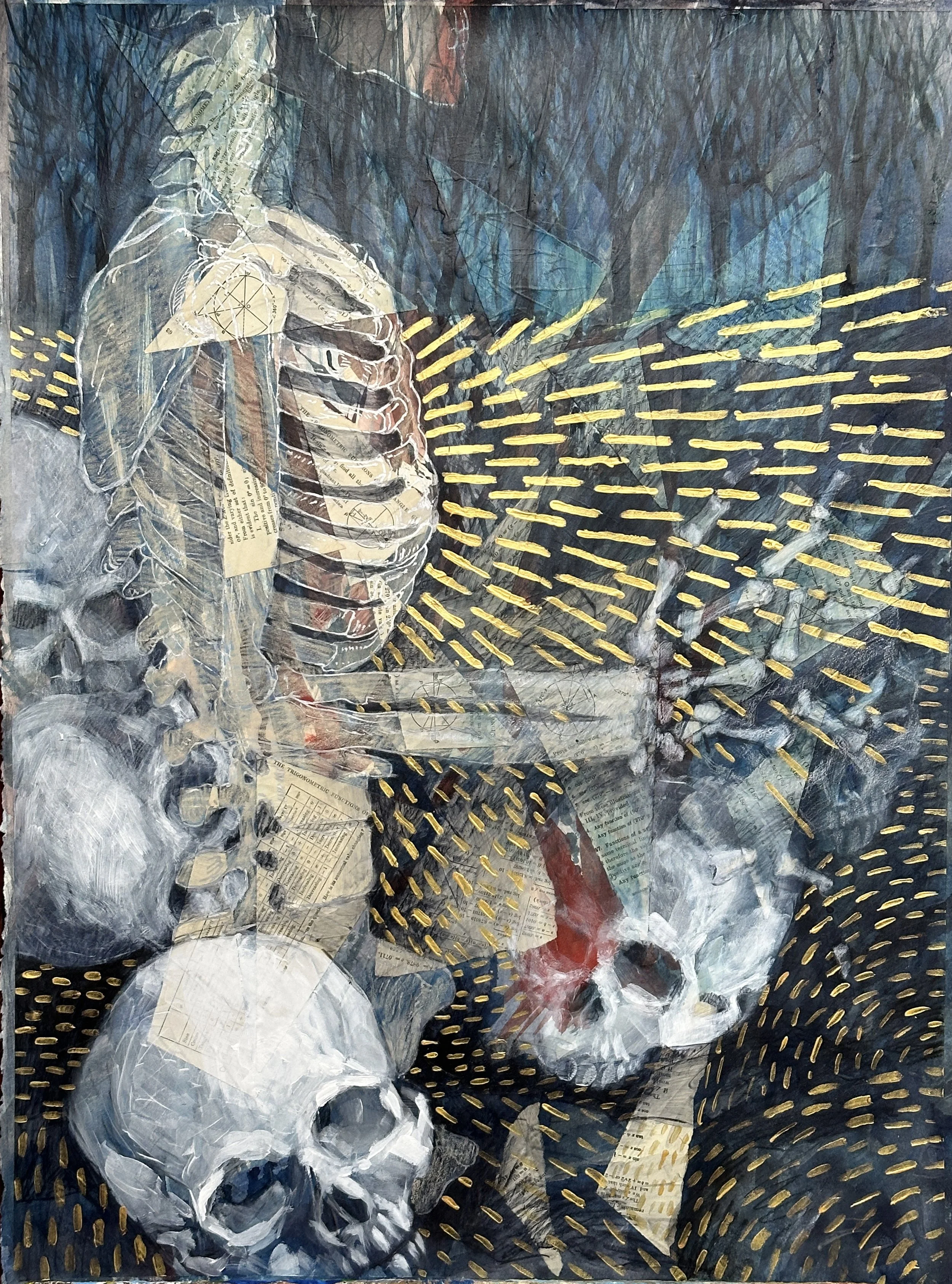“Untitled” and “Place of the Skull”
Barb Knuckles, Untitled, 2024
Barb Knuckles, Place of the Skull, digital collage with linocut after Grunewald’s Isenheim Altarpiece, 2024
These two collages are jarring when you first see them. The first one depicts a closeup of a person’s skeletal torso in profile juxtaposed overlaid with five skulls that are pieced together from pages from a math textbook on top of a dark blue background. Upon closer examination, dark trees form a foreboding line behind the skeleton. The painterly feel of these trees gives them even more movement, as if they are swaying in a harsh breeze. Despite this somewhat frightening depiction, the piece is studded with golden yellow lines, some of which emanate from the torso and point outward towards something else. These golden dashes create a more hopeful undertone for this piece, making it feel that the concept of death that is introduced by the skulls and skeleton are not the end. This is encouraging because of the confusing nature of death; the math sheets that are torn and worked into the skeleton and skulls seem to call out how anti-order death really is; that we were not created to be separated from our loved ones in this devastating manner. The brightness of the golden dashes points us to the other piece to finish the story.
This second piece shows an image of a man, Jesus, being crucified on a cross with angry clouds and winds behind the cross. A large skull looks out from beneath and behind the cross, almost looking directly at the viewer. Beneath the skull are more golden lines and dashes creating a pattern almost like soundwaves. The linocut style creates a rougher and almost guttural feel for this piece than the watercolor collage feel of the first image. The lines of the man’s body and the cross are carefully carved out while the winds and clouds in the background are more jaggedly gouged out of the linoleum tablet, which creates more urgency and movement. The man’s eyes are cast down and his face is lined with anguish, while his hands are twisted in pain. It is a difficult image to look at for long.
This is the end to the store that was started on the first piece, but is it the ending that we wanted? Can this bloody and brutal crucifixion be a justifiable solution for the problem of death depicted in the first piece? At first glance, it is hard to believe that this could be so. The dark and slightly muddy blues in these pieces feel harsh and sad, and the lines are drastically expressive of this sadness, but the guiding light is the golden paint that dances throughout both pieces as if to point to the One that is at work throughout all of this. And so, we are reminded that we cannot give up hope because of the work that Christ has done for us in our place because of his great love for us. These pieces are a beautiful and heart-wrenching depiction of just how deep Christ’s love for us runs.


